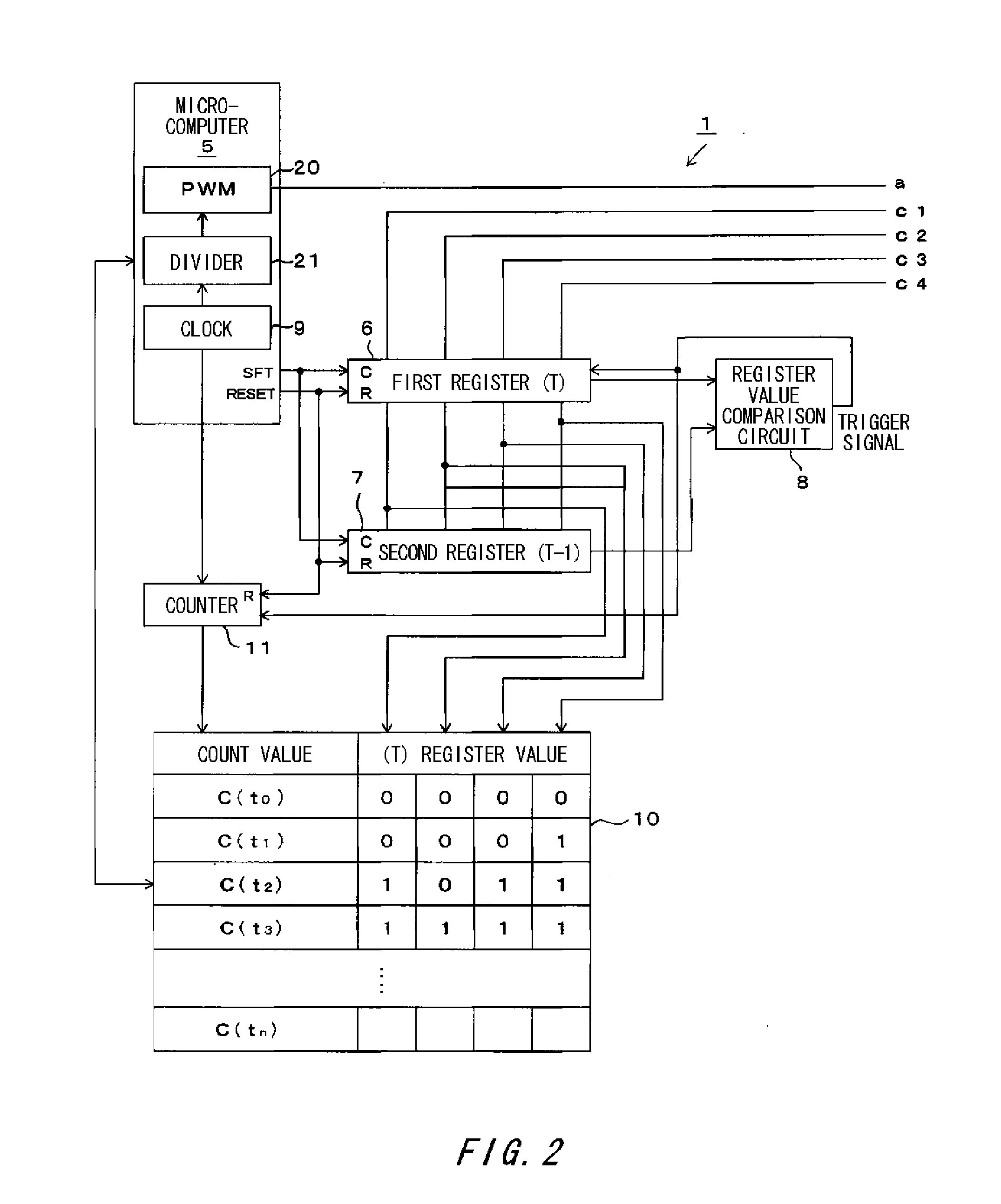Capacitive touch panel
a capacitive touch and touch panel technology, applied in the direction of resistive/reacting/impedence, pulse technique, instruments, etc., can solve the problems of complex circuit configuration, increased size, and inability to detect input operations made to sensing electrodes in a short tim
- Summary
- Abstract
- Description
- Claims
- Application Information
AI Technical Summary
Benefits of technology
Problems solved by technology
Method used
Image
Examples
Embodiment Construction
[0037]A capacitive touch panel (hereinafter called a touch panel) 1 according to an embodiment of the invention will be described below by using FIGS. 1 to 4. The touch panel 1 includes a plurality of sensing electrodes 31, 32, 33 and 34 formed on an insulating panel not shown with an insulation distance of some millimeters therebetween, for example. The stray capacitance Cs of each of the sensing electrodes 3 is expressed as a total of the capacitance of a surrounding conductive pattern, capacitance of a shield case to shield a unit, and capacitance formed between the sensing electrode and the ground. The stray capacitance Cs increases in response to approach of an input unit such as a finger while other capacitances are kept at substantially constant levels. The stray capacitances Cs1, Cs2, Cs3 and Cs4 of the respective sensing electrodes 3 are compared, and a sensing electrode 3 having the highest stray capacitance Cs compared with the others is regarded as that an input unit hav...
PUM
 Login to View More
Login to View More Abstract
Description
Claims
Application Information
 Login to View More
Login to View More - R&D
- Intellectual Property
- Life Sciences
- Materials
- Tech Scout
- Unparalleled Data Quality
- Higher Quality Content
- 60% Fewer Hallucinations
Browse by: Latest US Patents, China's latest patents, Technical Efficacy Thesaurus, Application Domain, Technology Topic, Popular Technical Reports.
© 2025 PatSnap. All rights reserved.Legal|Privacy policy|Modern Slavery Act Transparency Statement|Sitemap|About US| Contact US: help@patsnap.com



